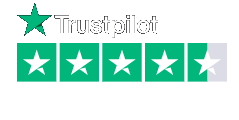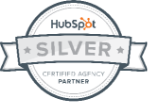A high converting landing page or pages are key to the success of your lead generation. You simply cannot have one without the other.
The ideal lead generation landing page is built purely for that purpose - to generate leads in the hopes of conversion. Typically you’ll be offering something of value - such as a content offer or discount code - in exchange for your potential lead’s information, but we’ll touch more on this later. These landing pages are not to be confused with a generic click-through to buy landing page, where you wouldn't have the opportunity to take details from the users within the page.
A lead gen landing page should include a form where you pose simple questions, such as “First name, last name, email, phone number” etc. The form’s questions should be as useful to you as possible, so ask what you want or need to know. Be conscious not to ask too many questions, or too in-depth questions, as you’ll run the risk of your prospect losing interest and not filling in your form at all. This would contradict the entire objective of your landing page, which is to capture your prospects information and generate as many high quality leads and contacts for your business as achievable.
So, how can you make your landing pages high converting?
There are a number of changes you can make to your landing page to make sure that it’s high converting. We’re going to be paying attention specifically to the successful designs, call-to-actions, forms and message matching on high converting landing pages. But while you’re here, we’ll also discuss the importance of the contributions of testimonials, a valuable offer, and scarcity.
Design
Design is critical to a high converting landing page. It must be visually pleasing or people will bounce from your page. You want someone to arrive at your landing page and trust it’s professional. A rough, or just generally bad design, won’t help you achieve this.
First, stick to your brand. Your landing page should be trademark you. Make sure your logo and your brand colours are present. Don’t use every colour under the sun to grab attention. In the end it’ll look juvenile and nonsensical which i’m sure isn’t the vibe you’re going for. There are plenty of ways to stand out. Be clever and harmonise. Make your titles prominent and easy to read. Remember to leave room for white space to let the reader breathe, and most importantly… Don’t be boring.
User experience (UX) plays a massive part in the design of your landing page. UX focuses on the usefulness, accessibility, value of information, credibility and usability of your page. These factors should all be central in thought when designing your landing page as these are the components which will contribute to a good or bad user experience. Good UX theoretically means you’ll gain a new high-quality lead. Bad UX means you’ll lose that chance.
We advise you build your landing page forms so they are mobile friendly. Mobile users are more active now than ever before. Be mindful that this could be this device, rather than a desktop, your prospects are using when they come into contact with your page.
If you wish to learn a little more on what UX is, click through to our blog ‘A Concise Introduction to User Experience.’
Call-to-actions
A strong call-to-action (CTA) is the deciding factor that will drive your potential lead to completing your form.
Without a clear call-to-action on your landing page it won’t be obvious to your prospect what you’re actually asking them to do, and there would be a lack of a trigger for action. CTAs are present for guidance and direction towards your desired action.
A few examples of useful, simple call-to-actions could be:
- Sign up today
- Subscribe
- Join free
- Read now
- Download for free
Your call-to-action should be highly visible so the reader knows where they’re going. It takes the navigation out of their hands and presents them with an effortless journey on your landing page. Bright colours, we find, tend to work best but keep in mind from earlier - stick to your brand guidelines. Your call-to-action is no exception - stay consistent.
Forms
Your form is the last, yet most important, stage to get right.
The content of your form will determine whether your prospects will leave you with their information or not. This section should take as much thought and effort as the rest of your landing page as it’s literally one of the deciding factors.
The length of your form should be considered with what’s called ‘Goldilocks syndrome’. If it’s too long and asks too much of your prospects, then you’ll risk losing them. However, if your form is too short then there's a possibility you’ll lose out on worthwhile information you would have gathered. Ask what you need, but don’t push it.
Your form should also have a short introduction of its own aside from the copy elsewhere on the page. Just a quick persuasive and informative statement that will be the final convincing component to them completing your form.
Message Match
Reinforcing or not reinforcing your message can make or break your landing page.
Most prospects will decide within seconds whether they want to be on your web page or not. If a lead clicks a link or advert that promises one thing but says another upon arrival, then you’re going to lose them. Let’s face it, people are impatient. Even if your landing page does deliver what was promised, if it’s not the most obvious piece of copy the chances of your lead genuinely reading on to find out, are slim.
It's in your best interests to make sure message match is done correctly as this will directly affect how much you pay per click on PPC platforms (like Google Ads) and will affect your conversion rate across all channels.
So, those are the basics… Let’s look into a couple of extras that can decide the success or failure of your landing page.
Once you have the basics under control and working in your favour, here are a few extras to try out to add to the value of your landing page and, in turn, your quality lead generation.
Testimonials
Using testimonials in your landing page is exceptional for building trust between you and your leads. Providing your prospects with clear and glowing testimonials from previous clients or customers, gives them proof of your good service or products.
Word-of-mouth is still such a powerful form of marketing and people have confidence in people. Being so open with past reviews not only confirms assurance, it adds legitimacy to your business.
Offers
What you give in exchange for your prospects’ information can have a massive effect on your landing page conversion rate. If people don’t want what you have to offer, who’ll sign up?
The key aspect to remember here is to be valuable. Provide to your leads with what they would consider to be relevant and beneficial, and most of all something worthwhile for their answers.
However, being valuable can be like a double-edged sword - you want to be valuable enough for your leads to complete your form, but not so generic in value that just anyone would be interested. If you have a general run-of-the-mill offer, chances are you’ll attract leads who aren't really your target audience and are unlikely to purchase from you in the future, and are therefore, a waste of your precious time.
Scarcity
Scarcity in the context of your landing page is purely a limitation on your offer.
You can use scarcity in your landing page by either putting a time limit on your offer or a quantity constraint.
For example:
- Only 10 left in stock!
- 2 days left!
- For one week only!
This works best as it’s that little extra push towards the call-to-action button that your prospect needs. If they think they’re going to lose out, it’ll make them want it even more.










